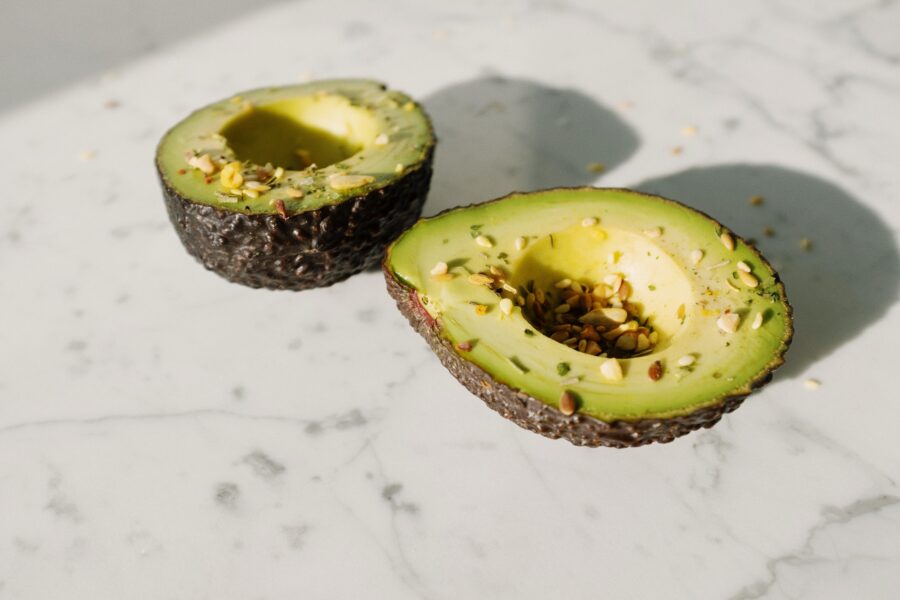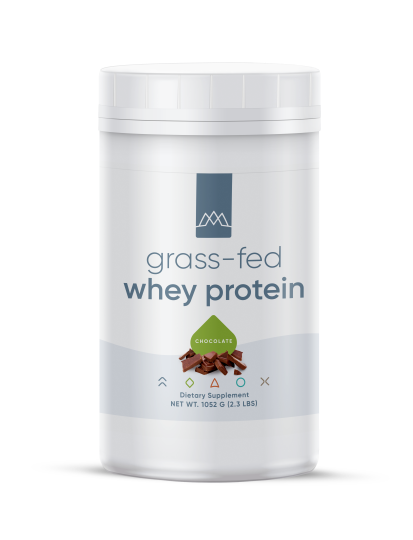 When it comes to improving physical performance and gaining muscle, the foods you eat are just as important as your routine. Providing your body with the right nutrients after you exercise–and leading up to your next workout is crucial for alleviating muscle soreness, repairing muscle damage, replacing lost energy stores, and supporting muscle repair and growth. In this article, we list some of the best foods that you should incorporate into your diet to aid muscle recovery, focusing on key macronutrients: proteins, carbohydrates, and fats.
When it comes to improving physical performance and gaining muscle, the foods you eat are just as important as your routine. Providing your body with the right nutrients after you exercise–and leading up to your next workout is crucial for alleviating muscle soreness, repairing muscle damage, replacing lost energy stores, and supporting muscle repair and growth. In this article, we list some of the best foods that you should incorporate into your diet to aid muscle recovery, focusing on key macronutrients: proteins, carbohydrates, and fats.
Carbohydrates: Refueling Energy Stores
Carbohydrates help replenish glycogen, a form of stored glucose, used by your muscles during exercise. Consuming carbs after a workout can restore energy balance, reduce fatigue and fuel your body up for your next performance.
Sweet Potatoes: These alternatives to white potatoes are rich in complex carbohydrates and fiber, providing a steady supply of energy for muscle recovery. They are also high in vitamin C, which aids in muscle repair.
Quinoa: This cereal alternative is a complete protein, meaning it contains all the essential amino acids, and is a fantastic source of complex carbohydrates, packing a one-two punch for muscle recovery.
Bananas: These fruits are an excellent source of easily digestible carbs and are packed with potassium, which is key to muscle function.
Berries: Berries are full of fast-acting carbohydrates and are also rich in antioxidants that can help reduce muscle inflammation and oxidative stress, which can minimize muscle soreness.
Fats: Reducing Inflammation and Supporting Recovery
 While often misunderstood, certain fats, particularly omega-3 and omega-6 fatty acids, play a key role in reducing inflammation and enhancing muscle recovery.
While often misunderstood, certain fats, particularly omega-3 and omega-6 fatty acids, play a key role in reducing inflammation and enhancing muscle recovery.
Avocados: Packed with monounsaturated fats, avocados can help speed up muscle repair. They are also high in fiber and rich in antioxidants.
Nuts and Seeds: Almonds, walnuts, chia seeds, and flax seeds provide a healthy dose of essential fatty acids, fiber, and protein. They’re perfect alone as a snack or added to salads or your post-workout shake.
Olive Oil: Extra virgin olive oil is high in monounsaturated fats and has anti-inflammatory properties, which can help with muscle recovery.
Protein: The Body’s Building Blocks
For muscle recovery, protein is king. It’s crucial after exercise, as muscles use protein to repair the tiny tears caused by physical activity. Protein intake between workouts is also key because it provides the amino acids required to build and maintain existing muscle tissue and serves to stimulate the development of new muscle to help build your back stronger.
But that’s not all.
 Protein is vital for more than just muscle maintenance. It fuels bodily functions, supports our immune system, and contributes to the health of our hair, skin, nails, bones, and blood cells. It’s also essential for creating enzymes, hormones, and other key systems. Consequently, people who lead an active lifestyle require slightly more protein because of its various health requirements.
Protein is vital for more than just muscle maintenance. It fuels bodily functions, supports our immune system, and contributes to the health of our hair, skin, nails, bones, and blood cells. It’s also essential for creating enzymes, hormones, and other key systems. Consequently, people who lead an active lifestyle require slightly more protein because of its various health requirements.
Eggs: They are nature’s protein powerhouse. An egg contains around 6 to 8 grams of high-quality protein, which is easily absorbed and used by the body.
Greek Yogurt: This yogurt variant is rich in protein—almost double the amount found in regular yogurt—and it also provides a good dose of calcium, essential for bone health.
Chicken: This lean meat is a fantastic source of protein and is also packed with B vitamins, particularly B6, which is important for protein metabolism.
Salmon: Beyond being an excellent protein source, salmon is rich in omega-3 fatty acids that help reduce inflammation and speed up muscle recovery.
Protein Powder: Even with the vast variety of protein foods available today, protein powder can provide a remarkable range of value. First, it takes virtually minutes to make a high-protein shake that you can take on the go, or in-between meals to fuel muscle recovery and support an overall wellness plan.
Clean, Healthy Protein on the Go
 Today, well-informed health-conscious people are turning to high-quality protein powders like MaxLivings Grass Fed Whey protein to make getting their protein needs met easier than ever. This delicious protein delivers 100% undenatured whey protein, which is delicately processed to ensure that vital enzymes, vitamins, minerals, and other immune factors remain intact. It’s made from milk that comes from cows that graze on pesticide-free pastures, without the use of hormones or antibiotics.
Today, well-informed health-conscious people are turning to high-quality protein powders like MaxLivings Grass Fed Whey protein to make getting their protein needs met easier than ever. This delicious protein delivers 100% undenatured whey protein, which is delicately processed to ensure that vital enzymes, vitamins, minerals, and other immune factors remain intact. It’s made from milk that comes from cows that graze on pesticide-free pastures, without the use of hormones or antibiotics.
This is a stark contrast to conventional mass-produced, whey protein powders, which are made from milk that comes from cows with diets high in grain, pesticide-laden corn, and byproducts. These cows are milked year-round and are freely given antibiotics and hormones. Dairy cows fed a diet high in grain have a higher incidence of metabolic disorders, and studies show their digestive fluids contain more toxic, inflammatory compounds and several amino acid changes.
Timing
The timing and balance of your post-workout nutrition also matter. For optimal recovery, aim to consume a balanced meal that includes protein, carbohydrates, and fats within 45 minutes to an hour after your workout.
Remember, everybody is unique, and everyone responds differently to different types of foods. It may take a bit of trial and error to find out what works best for you. However, these nutritious foods are a great place to start for supporting your muscle recovery and ensuring you’re ready to take on your next workout with gusto.
About the Author
 Zach Zovath graduated with a Bachelor’s degree in Exceptional Education from the University of Central Florida. He continued on to receive his Master’s degree from the College of Education and Human Performance at the University of Central Florida. He is a master-level personal trainer, coach, and health consultant. In addition, his specializations include corrective exercise, performance enhancement, prenatal/postpartum core stability, and exercise therapy. As a result of his education and experience in the health and fitness industry, he has developed fast and effective exercise programs for health care facilities.
Zach Zovath graduated with a Bachelor’s degree in Exceptional Education from the University of Central Florida. He continued on to receive his Master’s degree from the College of Education and Human Performance at the University of Central Florida. He is a master-level personal trainer, coach, and health consultant. In addition, his specializations include corrective exercise, performance enhancement, prenatal/postpartum core stability, and exercise therapy. As a result of his education and experience in the health and fitness industry, he has developed fast and effective exercise programs for health care facilities.




